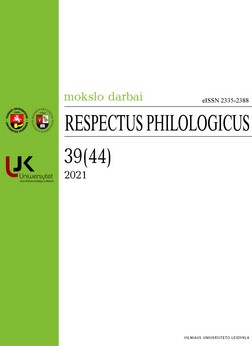Kiek istorinės informacijos esama dvikalbiuose žodynuose?
How much is Historical Knowledge Present in Bilingual Dictionaries?
Author(s): Aušra ValančiauskienėSubject(s): Lexis, Semantics, Comparative Linguistics, Baltic Languages
Published by: Vilniaus Universiteto Leidykla
Keywords: bilingual dictionaries; encyclopaedic information; historical knowledge;
Summary/Abstract: During the development of structuralist semantics, there was a strong emphasis on distinguishing encyclopaedic and linguistic dictionaries. In the latter, any reference to encyclopaedic knowledge should be absent or kept to a minimum. Later it was realised that it is impossible to write a dictionary without using any encyclopaedic explanations. Those explanations make a dictionary more attractive, more interesting to read, and therefore more usable. This is particularly important when preparing bilingual dictionaries because it is two languages and two cultures that are being aligned and compared. As lexica related to cognitive fields (physics, medicine, botany, etc.) is incorporated into the nomenclature of modern dictionaries, relevant encyclopaedic information is then added by way of explanation. Accordingly, this article examines, based on analytical and descriptive methods, how historical knowledge is presented in the micro-and partly macro-structures of four dictionaries: The Great Lithuanian-English Dictionary (2006), Lithuanian-Russian Dictionary (2015), The Great Lithuanian-French Dictionary (2012) and Lithuanian-Norwegian Dictionary (2016).
Journal: Respectus Philologicus
- Issue Year: 2021
- Issue No: 39(44)
- Page Range: 173-184
- Page Count: 12
- Language: Lithuanian

